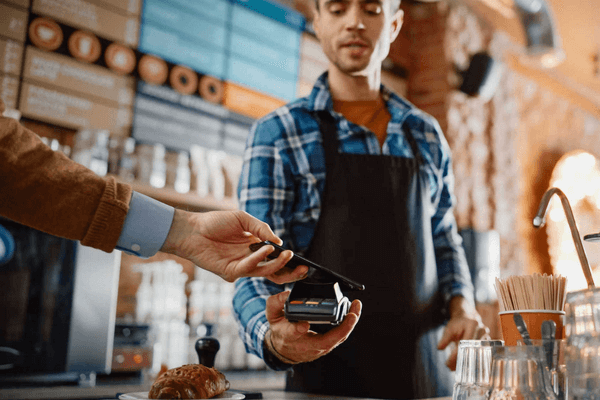
From direct exchanges to the use of cash, the way payments are made has changed over the centuries. Today, there is no longer any need to touch cash or cards, all thanks to digital payments.
Over the centuries, the evolution of means of payment never stopped. In this way, it was possible to reach the level of immateriality that we experience today. If before you had to exchange salt for eggs, nowadays you can buy these two products without having to touch money.
Have you ever imagined what it's like, for example, to put your smartphone against a payment terminal to do your shopping? Or a smartwatch? This is only possible thanks to contactless technology.
What is contactless technology?
Today, concepts such as digital platforms, virtual currencies or contactless payments are already part of our routine vocabulary.
Although they have different meanings, their purpose is one: to simplify consumer payments without the need for cash or cards. All without losing the security of the transactions, of course.
In short, the contactless technology allows you to pay by card, smartphone or wearables, by approaching the TPA. This way, payments are made quickly and easily.
Pandemic drives digital payments
With the mandatory lockdown due to the COVID-19 pandemic, online businesses have seen a boom. As a result, alternatives to physical cash had to be found. This is how digital payments came to be, becoming part of everyday life for many consumers even after the pandemic ended.
Although only essential establishments such as supermarkets and pharmacies were open, there was a large increase in the number of shoppers. contactless payments. Why? Because as well as avoiding contact with physical money, one of the ways of spreading the disease, this was a more practical solution.
Even after the pandemic, a number of businesses started to have a Contactless PINThis boosted sales. Paying for them became much simpler, quicker and safer for the consumer, simply by bringing the device or card to the terminal. What's more, this was a solution that enabled traders to sell goods and services to tourists, who began to seek out Portugal after the restrictions were lifted.
How digital payments help preserve the environment
Another major concern that arose during the pandemic was environmental issues. In this sense, how could we contribute to reducing the consumption of paper, for example?
Much more than practicality, digital payments have proved to be a great ally for those seeking to preserve the environment. Why is that? Because:
- It avoids the production of paper notes (according to the Akatu Institute, 540 litres of water are needed to produce one kilogram of this material);
- Contactless avoids the use of paper, reducing all the associated environmental impacts;
- Dematerialising the use of cards by using digital wallets, thus reducing the amount of plastic used to make them.
Digital customer area helps make the planet more sustainable
As a result of the needs that have arisen during the pandemic, several financial organisations have opted to create online customer areas. This has not only helped to simplify communication with customers, but has also helped to reduce the ecological footprint.
How can a customer area be sustainable? Simple: because it's digital, there's no need, for example, to consume resources such as paper, which is often used to print documents.
One example of the commitment to this sustainable transition is REDUNIQ. As well as being very practical and intuitive, the REDUNIQ client area gives you the possibility to consult all the information relating to your business, such as transactions and invoices. Everything, of course, is just a click away, on the website or via the mobile app.
UNIBANCO launches ecological cards made from degradable PVC
With environmental developments and concerns in mind, the UNIBANCO, the group's brand UNICREin 2020, created an ecological card made from degradable PVC. It has thus taken a step forward in contributing to the sustainability of the planet without, however, neglecting the practicality of its payments.
With the combination of components that allow them to speed up the decomposition process, these cards have a lower environmental impact than traditional ones. They replace plastic cards and can even be recycled and reused to produce energy.


